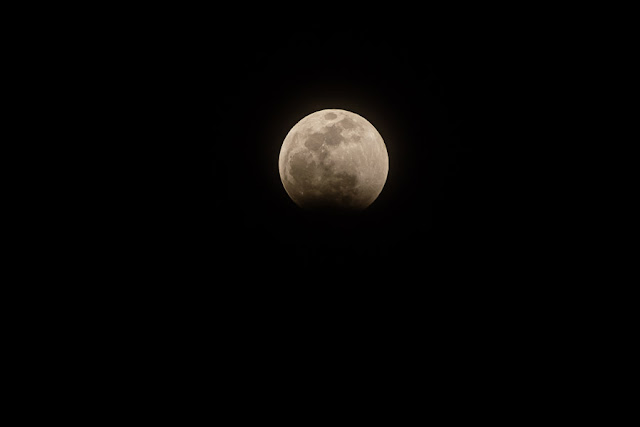How to photograph Lunar Eclipse
We recently witnessed the Total Lunar Eclipse on January 20th, 2019. I want to take you through the process of photographing the event. This brings up lots of fundamentals of photography and exposure triangle. The Moon despite the brightest object in the night sky becomes so dim that you cannot take its picture hand-held.
Let's go through the list of gear you need for capturing the event.
Using the above principles following are some of the captures during the Lunar eclipse on January 20th, 2019. I have mentioned the exposure details below the images.
Let's go through the list of gear you need for capturing the event.
- Camera: Any DSLR should be fine for this genre of photography
- Lens: I recommend using at least 300mm lens. If you have longer lens, you will get bigger picture of the moon. Also recommended is the lens-hood.
- Tripod: This is a must have gear for any kind of astro-photography. As the total phase approaches, the exposures become longer.
- Cable release: Any mechanism of remote shutter release will be helpful to avoid camera shake while pressing the shutter.
There are some of the settings you need to make sure before you start shooting. The Moon is celestial object, effectively at an infinite distance. So set your camera and lens(if applicable) to manual focus and focus on the moon before the eclipse starts. The focus need not change during the whole photographic session.
The camera/lens is going to be on the tripod so turn the image stabilization(IS or VR) off. Keeping it on will give unnecessary shake affects the sharpness of the image.
Third, there is no depth of field consideration as the object is far far away. So open the widest aperture possible for your lens to gather as much light as you can.
Near the total eclipse phase the brightness of moon will drop dramatically and would need longer exposure to record the details. I do not recommend going above 4 seconds of shutter speed. The movement of moon can cause the image lose its sharpness. For this reason keep the ISO at 400 or 800. That way the shutter speed can be within desired range to get sharp images.
If you want to photograph nearby stars as well, bump the ISO to 1600 or whatever higher number your camera allows without adding considerable noise.
Using the above principles following are some of the captures during the Lunar eclipse on January 20th, 2019. I have mentioned the exposure details below the images.
 |
| IMAGE -1 |
Details: 300mm, Manual Focus, f/5.6, 1/640, ISO 100
 |
| IMAGE - 2 |
Details: 300 mm, manual focus, f/5.6, 1/400, ISO100
 |
| IMAGE - 3 |
Details: 300mm, manual focus, f/5.6, 1/250, ISO 100
 |
| IMAGE - 4 |
Details: 300mm, manual focus, f/5.6, 1 sec, ISO400
 |
| IMAGE - 5 |
Details: 300mm, manual focus, f/5.6, 2 sec, ISO 400
